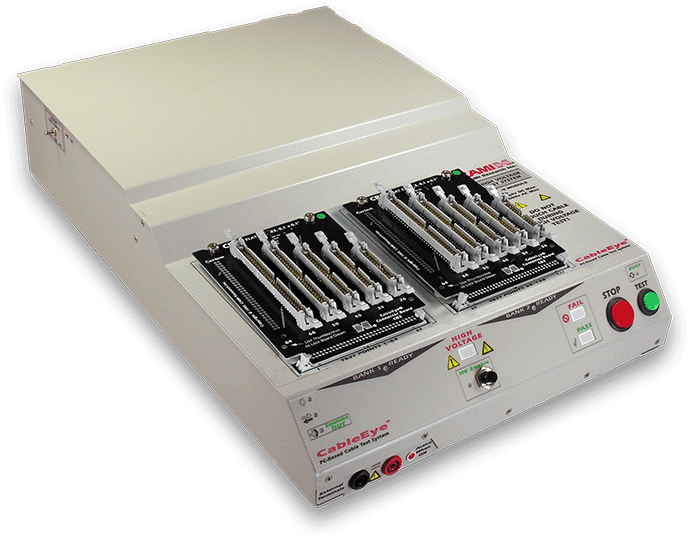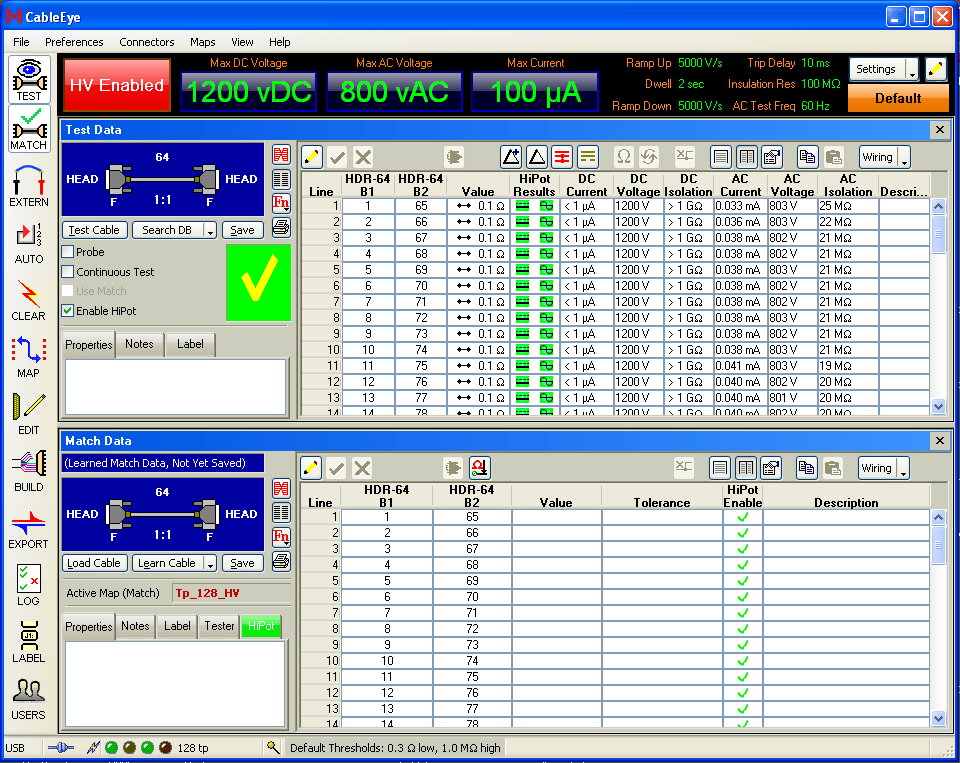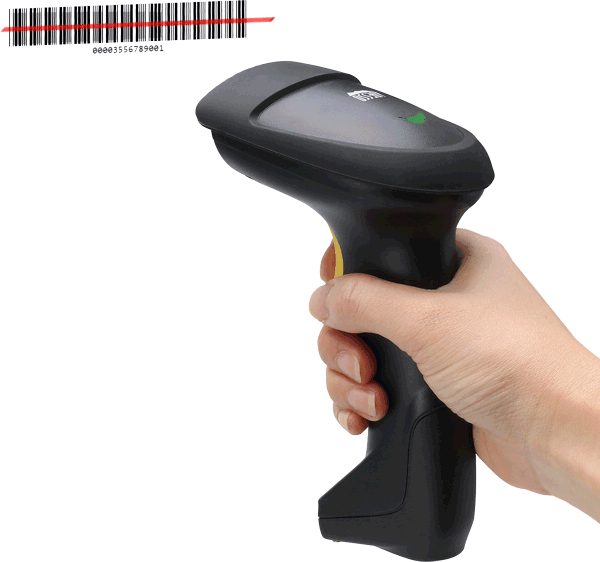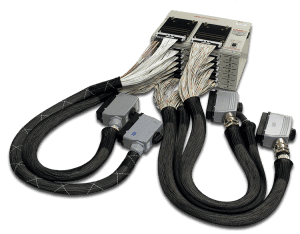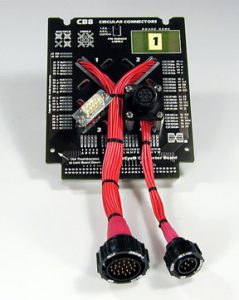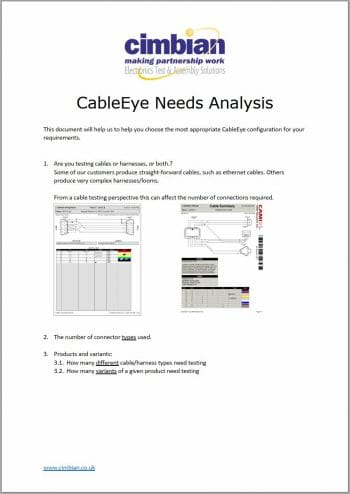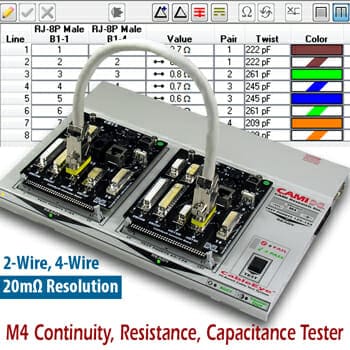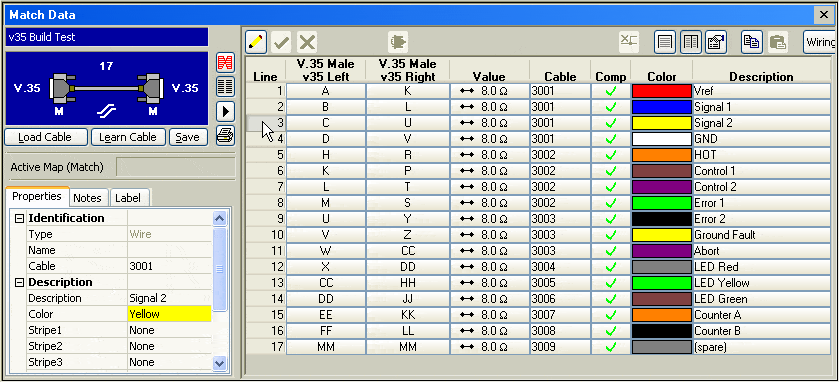
Standalone Software – Work Smarter with the CableEye®
Standalone Software License – Work Smarter
When you invest in a CableEye® cable test system, you’re getting a powerful combination of hardware and software that makes cable testing efficient, fast, and accurate; however, under normal conditions, the CableEye software only runs when the tester is physically connected to the computer.
But what if your engineers, designers, production planners, or support team members, etc., need access to the software, without tying up the tester?
That’s where the CableEye Standalone License comes in.
What Is the Standalone License?
The Standalone License enables you to install and run the CableEye application software on additional computers without requiring the tester to be connected. This makes it ideal for tasks that don’t require physical testing, such as:
-
Managing your cable database
-
Printing reports and labels
-
Designing new cables and connectors
-
Editing test macros
-
Logging and documentation work
When you order this license, you’ll receive an installation drive that includes an activation key for standalone operation. Plug it in, install the software, and start using it.
Why Use the Standalone License?
Here’s how your team can benefit:
✅ Work Independently from the Test Bench
Your engineers and support staff can use the software from their desks, freeing up the tester for production use.
✅ Design Without Delays
Create and edit cable assemblies, connectors, macros, and more—without interrupting ongoing tests on the production floor.
✅ Improve Workflow Efficiency
Allow different departments (design, QA, documentation) to access CableEye tools at the same time, each from their own workstation.
✅ Quick and Simple Setup
The included installation drive contains everything needed to activate and install the software on additional machines, making deployment fast and straightforward.
✅ Built and supplied as a Site Licence tool
The StandAlone Software tool is part of a suite of software tools that may be used under CAMI Research’s Site Licence scheme.
What is a Site Licence?
A site licence for software is a type of software licence that allows an organisation to install and use the software on multiple computers within a specific location or organisation, rather than purchasing a separate licence for each individual user or machine.
Key Features of a Site Licence:
- ✅ Covers Multiple Installations: A single site licence typically allows unlimited (or a fixed number of) installations across all computers within a defined site, such as an office, building, or campus.
- ✅ Simplifies Licence Management: Instead of tracking individual licences for each user or device, you manage one central licence for the entire site.
- ✅ Cost-Effective: Especially for larger teams or departments, site licences often reduce the per-user cost compared to buying individual licences.
Examples:
- If your technical department has 20 engineers using CableEye® software, a site licence could allow all 20 of them to use the software across multiple computers, without needing to purchase 20 separate standalone licences.
- You are in a meeting and need to access productivity reports to present to your colleagues, such as yield, etc.
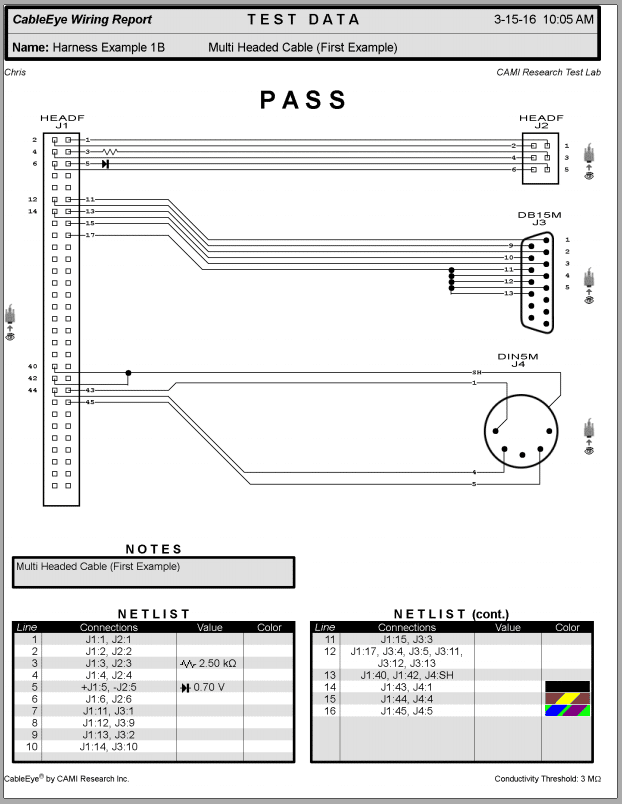
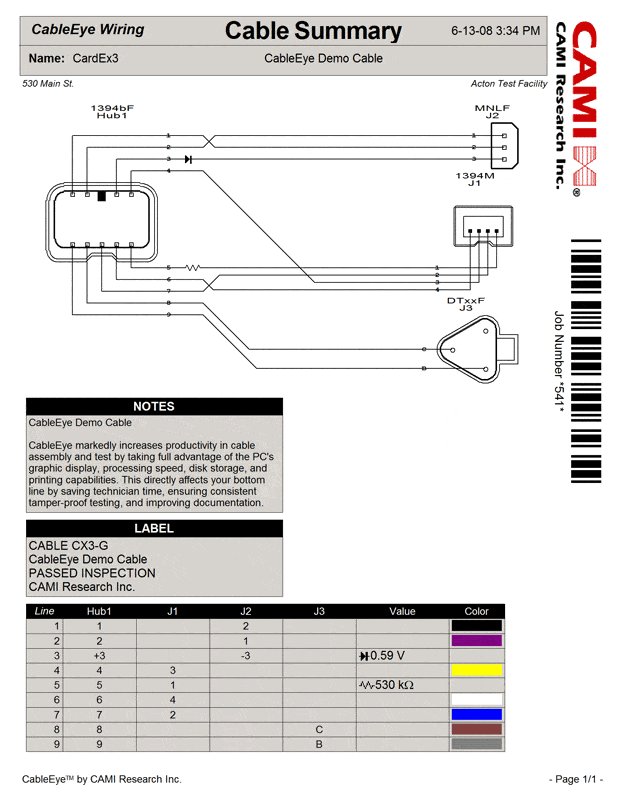
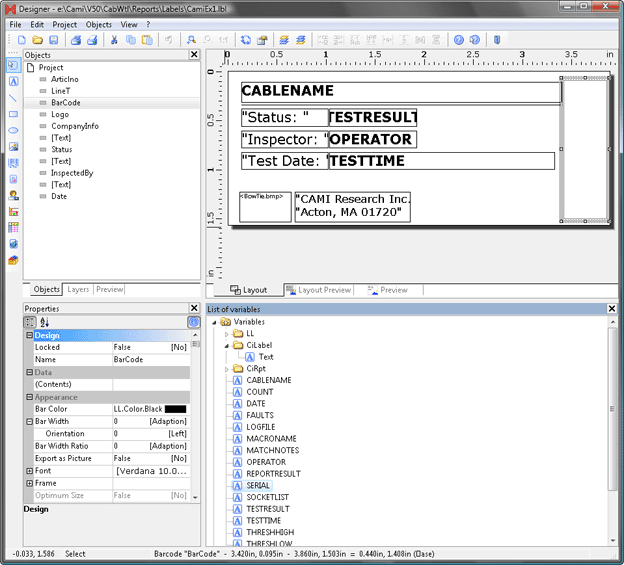
Real-World Applications
The Standalone License is ideal for:
-
Design Teams building and modifying cable layouts
-
Documentation Teams generating reports and labels
-
Quality Assurance reviewing logs and preparing test macros
-
IT or Admin Staff managing databases or installing on a central server for wider access
- Production Planners creating and accessing yield, fault, and throughput reporting (with the custom report generator)
Expand Your CableEye Capability
Whether you’re supporting a growing team or simply want to make better use of your tester hardware, the Standalone License helps you and your team get more done—without getting in the way of production.
Not all cable testers are the same.
As you can see, there’s more to cable testing than shorts and opens!
If you found this page interesting please share it with your friends and colleagues.


